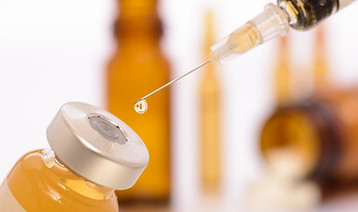yes2vaccines.org

Vaccines
How the vaccine works?
Vaccines train your immune system to recognize and fight harmful viruses or bacteria before you actually get sick. They do this by introducing a harmless part of the pathogen (weakened, inactivated, or protein-based) or genetic instructions (mRNA) to stimulate an immune response.
✅ Step 1: The vaccine enters the body, exposing the immune system to a safe version of the virus/bacteria.
✅ Step 2: The body produces antibodies and activates immune cells to recognize the threat.
✅ Step 3: If the real virus appears later, the immune system quickly fights it off using these antibodies, preventing severe illness.
📢 Result: Immunity is built without the risk of getting seriously sick from the actual infection! 💪😷

Side effects & safety evidence
✅ Common: Mild fever, arm soreness, fatigue (1-2 days). These are normal reactions to introduction of the safe version of the pathogen.
✅ Rare: Severe allergic reactions (1 in a million cases, treated on-site). These are extremely uncommon, and are not a serious concern for the majority of people.
✅ Proven Safe: Backed by WHO, CDC, and extensive testing and research. It's always good to be cautious, but remember that vaccines are only given to you if we know that they are safe!
📢 Vaccines are far safer than the diseases they prevent! 💪✅

Types of Vaccines
Vaccines use different methods to train your immune system to fight infections. Here are the main types:
✅ 1. Inactivated (Killed) Vaccines – Uses dead virus/bacteria (e.g., Hepatitis A, Polio).
✅ 2. Live Attenuated Vaccines – Uses weakened virus/bacteria (e.g., MMR, Chickenpox).
✅ 3. mRNA Vaccines – Teaches cells to produce a harmless protein to trigger immunity (e.g., COVID-19).
✅ 4. Viral Vector Vaccines – Uses a harmless virus to deliver immunity instructions (e.g., Johnson & Johnson COVID-19, Ebola).
✅ 5. Subunit/Protein-Based Vaccines – Contains only key parts of the pathogen (e.g., HPV, Hepatitis B).
✅ 6. Toxoid Vaccines – Targets toxins produced by bacteria (e.g., Tetanus, Diphtheria).
📢 Each type is designed to provide strong protection against these diseases—vaccines save lives! 💪🌍

Who should get vaccines & why?
✅ Everyone is eligible! Vaccines protect both individuals and communities.
✅ High-risk groups: Elderly, children, pregnant women, and those with chronic illnesses should especially get vaccinated.
✅ Prevention is key: Avoid severe illness, hospitalization, and complications. Even if you are healthy, getting vaccinated can protect the people around you!

How & where to get vaccinated?
✅ Where: Hospitals, clinics, pharmacies (CVS, Walgreens), community health centers.
✅ How: Walk-in, online booking, or call local health departments.
✅ Cost: Often free or covered by insurance.
📢 Find a nearby vaccine center and protect yourself today! 💪🌍

More items
✅ The History & Impact of Vaccines
✅ Vaccine Development & Testing Process
✅Different Types of Immunity: Natural vs. Vaccine-Induced
✅ Vaccine Myths & Misinformation Debunked
✅ COVID-19 & Emerging Infectious Diseases
✅ Travel Vaccination Guide
✅The Science Behind Boosters & Annual Shots
✅Vaccine Breakthroughs & Future Technologies
✅Global Vaccine Efforts & How to Get Involved
✅ Laws & Policies Surrounding Vaccination
✅Emergency Preparedness & Epidemic Response
